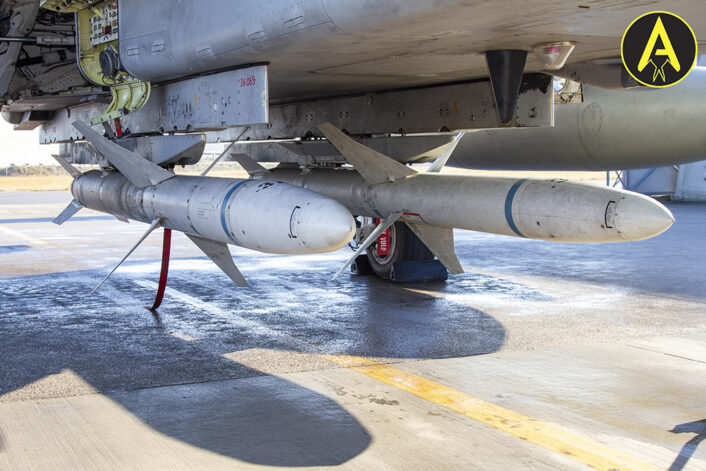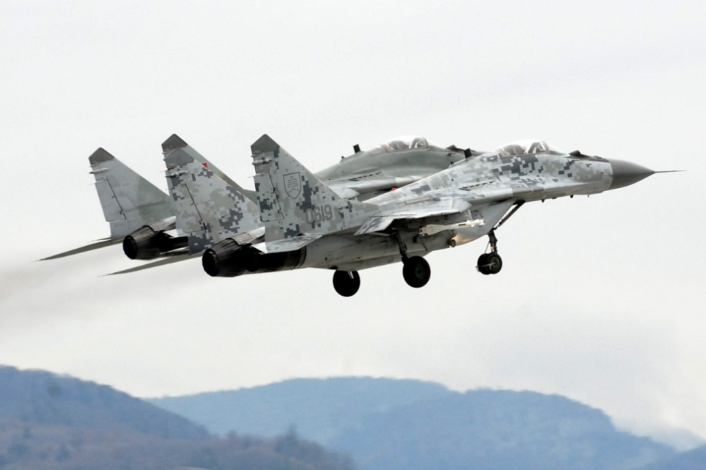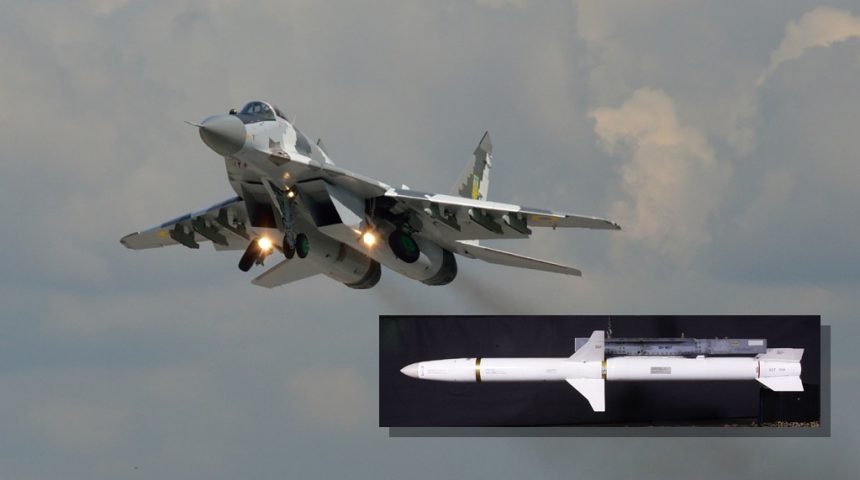US officials confirmed that the AGM-88 has been integrated on the Fulcrum to enhance its SEAD capabilities.
The United States announced another security assistance package to support Ukraine, worth $775 million. During the briefing with the press on August 19, 2022, to discuss the contents of the package, which is again a presidential drawdown package (the 19th since August 2021), the officials confirmed that the U.S. delivered AGM-88 High Speed Anti Radiation missiles to Ukraine and that these are being employed by the MiG-29 Fulcrum.
As you may know already, on August 8, U.S. officials said they were assisting the Ukrainian Air Force staying in the air and improving its capabilities. Something that was already done several months ago was the procurement of “sheer amounts of spare parts and other things” to keep the MiG-29s flying for a longer period of time, according to the briefing’s transcript.
Then, in one of the presidential drawdown authority packages, “a number of anti-radiation missiles that can be fired off of Ukrainian aircraft” were included, but no details were provided. In the same days, the first photos of debris left by HARM missiles after destroying Russian radars in Ukraine surfaced online. Other photos followed in the following weeks.
Many hypotheses were brought to the table, but without further details it was not possible to determine where the HARM came from. Now, during the August 19 briefing, the officials confirmed that AGM-88 missiles have been delivered, integrated onto Ukrainian aircraft and successfully employed to seek and destroy Russian radars, with additional missiles being readied for delivery.
“The aircraft that they have integrated it with is their MiG aircraft. They have actually successfully integrated it as something that we determined would be technically feasible, and based on that feasibility determination, we provided them with this capability”, said the official. Notice here the aircraft being generically defined as “MiG aircraft”. However, the MiG-29 has been explicitly mentioned during the briefing and, in addition to that, the Fulcrum is the only MiG model in service in Ukraine.

No details have been provided about how the missile was integrated on the MiG-29. As we already mentioned in a previous article, integrating the missile on the MiG-29 doesn’t simply mean strapping a LAU-118A launcher and the AGM-88 missile to the MiG’s pylons, there is a lot more work that needs to be done to integrate them in the avionics and electrical systems. Also, another problem is how the Fulcrum’s pilots will perform the targeting of the missile, which usually happens through a Multi-Function Display that cannot be found in the MiG-29’s fully analogic cockpit.
Some analysts are suggesting a solution which involves a simple tablet linked to the missile to perform the targeting, possibly through the HARM in sensor mode. As the name suggests, the missile’s sensor provides the pilot with a list of emitters that are being detected, from which one is then selected for the missile about to be launched. Another mode could be the Pre-Briefed mode, however it does not seem very practical in a quickly evolving battlefield as the position of the enemy radar is programmed on the ground and cannot be changed anymore by the pilot once the aircraft takes off.
The briefing also provided the reason why the first announcement about the delivery of HARM missiles was so vague. “We do want to be careful about how we talk publicly about capabilities that will give Ukraine a significant asymmetric and unexpected advantage”, said the officials. “In this case, we have seen them using it successfully, so we are more comfortable discussing it, but we are not disclosing the specific numbers of missiles.”

During the question time, the topic of aircraft delivery to Ukraine came up again, with also an explanation for the AGM-88’s delivery. Rumors about the possible delivery of A-10s, F-16s or F-15s were pretty common few months ago, later followed by a rumor about Ukrainian pilots being trained on the F-16. All of them have been pretty much debunked, and a good reason has been provided in the briefing.
“In the current, our focus has been on capabilities that we can get them quickly, that they can use in the current fight in now east and south Ukraine”, said the official. “So, in terms of aviation, we’ve focused on how we can enhance their existing aircraft fleet. That’s where the HARM missiles come into play, giving them that additional advantage.”
As you may imagine, providing Western fighters to Ukraine is a lengthy process, with lots of training involved that could make it even longer. Just consider, for example, the F-16 B-Course which is a 37-week long course. On average, B-Course students log 70 hours of flying time over 59 sorties in addition to roughly 245 hours of academic training and 69 hours of flight simulator training.
This is also why aircraft already in service in Ukraine are being preferred, as pilots and maintainers are already proficient with them and can get them in action immediately. One example of this are the Mi-24 Hind attack helicopters donated by the Czech Republic and the MiG-29 Fulcrum fighter jets that Slovakia is considering to sell to Ukraine later this year.
Back to the assistance package, together with the second batch of HARMs, the US are also providing: additional ammunition for the HIMARS system, which is being employed masterfully on the battlefield by the Ukrainians; 16 105 mm howitzers and 36,000 105 mm artillery rounds, which follow the similar howitzers and ammo sent by the UK and US, respectively; 15 ScanEagle UAVs, to improve Ukrainian ISR capabilities; 40 MaxxPro MRAPs with mine rollers and other mine-clearing equipment; 1,500 TOW missiles and 1,000 Javelin anti-armor systems; 50 additional armored HMMWVs.









